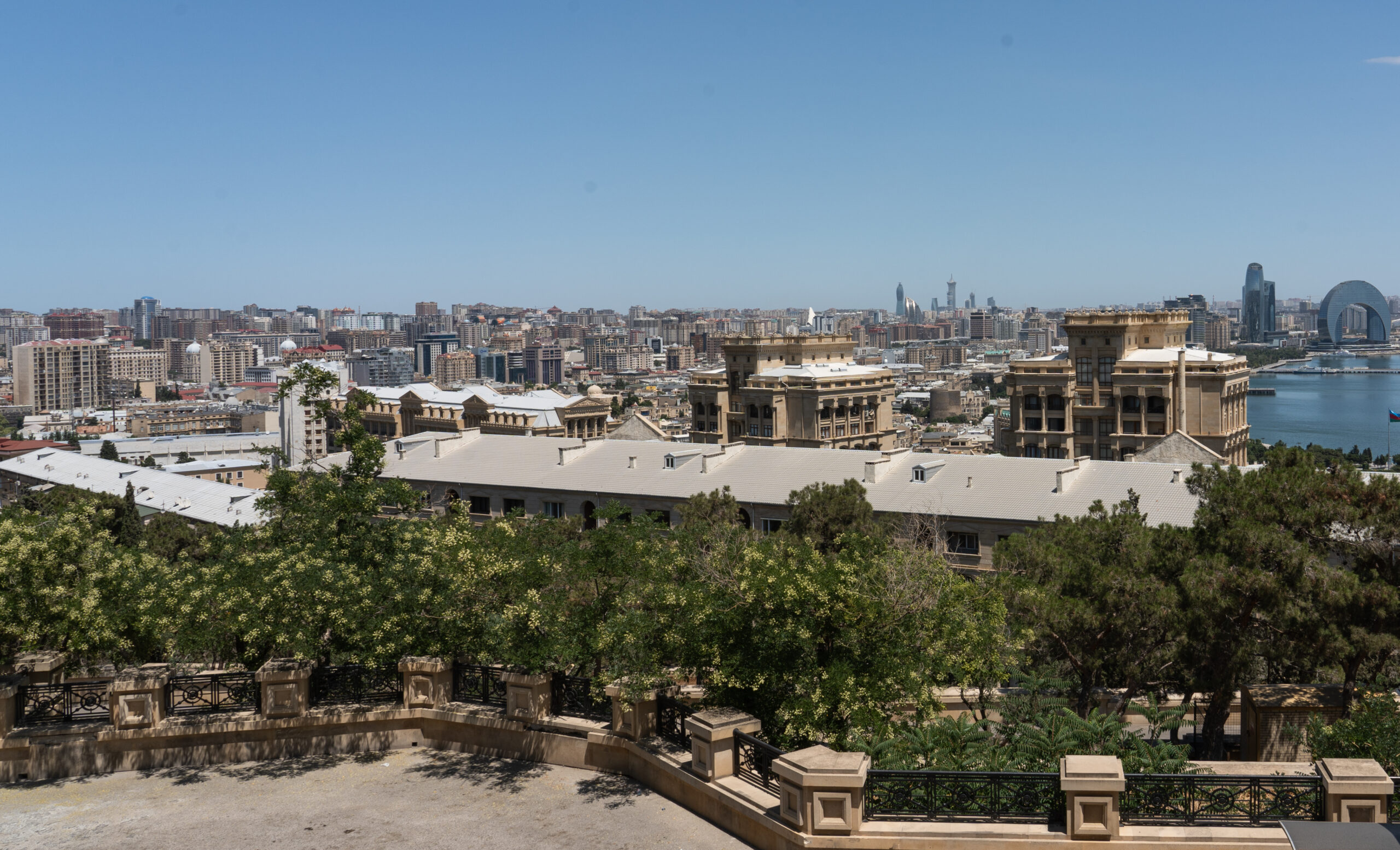Baku – The Capital City of Azerbaijan

Baku, the capital city of Azerbaijan, is in the envious situation of having many examples of beautifully restored historic buildings as well as an abundance of unusual and playful modern architecture. The old quarters are spotlessly clean with buildings dating back to the 12th century. Modern Baku is mostly built along the coast of the Caspian Sea and offers all the services of a contemporary city. Less than two hours from the city and you are in the mountains.
The summer temperatures are hot hot hot, but by 16:30 the heat dissipates and it’s cool enough and pleasurable to go for a stroll. Restaurant terraces fill up in the early evening with people enjoying the respite of the day’s heat. I made regular use of LaQuza, a long standing restaurant just 50 metres from The Double Gates of the old city. They serve a good selection of Azerbaijani dishes, and the central fountain in the patio garden creates a cool and fresh atmosphere. It’s popular with locals (always a good sign) and can fill up quickly in the evenings.

The Old Quarters
The old quarters of Baku are in remarkably good condition and most buildings have been well-maintained or reformed. Go with plenty of time, wander the streets, and allow yourself to get lost in their tranquility.
The Maiden Tower is the principal landmark as you enter the old quarters of Baku. It dates back to the 12th century and is a UNESCO World Heritage Site.

The Shirvanshahs palace was built in the 15th century and has all the majesty of a medieval fortification. It is also a UNESCO World Heritage site.


As you enter further into the old quarters the streets narrow and provide much welcome shade. Some of the old buildings have a semi-enclosed window similar to the Mashrabiya, typical in Islamic architecture.

Tucked in the historical centre is the discreet and peaceful Friday (Juma) Mosque.

Modern Baku
Much of modern Baku is a short walk from the old quarters. The Deniz Mall has a striking design and is built on reclaimed land on the Caspian Sea. While the architecture of the mall sits well with other daring designs, the interior could be anywhere and is typical of the average characterless mall.

The Carpet Museum was built to look like a rolled-up carpet. It has a wide range of Azerbaijan carpets from as far back as the 17th century. It is possible to buy carpets from their shop, and the prices are several times what you would pay at auction in Europe for similar quality rugs.


For most, the Flame Towers are the glistening and flickering symbol of Baku. The funicular railway makes a fun and easy way to get up to the towers. It is worth the visit if only for the great views over the city.








